German cuisine is often misunderstood as merely heavy or hearty, but at Spiritual Culture, we view it as a profound expression of regional identity, historical resilience, and communal warmth—known famously as Gemütlichkeit. The culinary landscape of Germany is a tapestry woven from centuries of localized traditions, where recipes are not just instructions but heirlooms passed down through generations to preserve the spirit of the hearth.
From the monastic origins of baked goods to the preservation techniques born of harsh winters, every dish tells a story of survival, celebration, and the sacred act of breaking bread together. As of the current time of writing, interest in traditional foodways is surging, as people seek a deeper connection to their roots and the comforting stability of ancestral flavors in a rapidly changing world.
In this article, we move beyond simple taste tests. We analyze the cultural pillars that support these dishes, examining why they have stood the test of time and how they continue to foster community and spiritual well-being today. We invite you to sit at the global table as we explore the heritage behind the flavor.
Table of the Top 10 German Foods with the Greatest Cultural Influence
| Rank | Dish Name | Primary Origin/Region | Cultural & Spiritual Significance |
|---|---|---|---|
| 1 | Brezel (Pretzel) | Swabia / Bavaria | Symbol of prayer; monastic heritage representing crossed arms. |
| 2 | Sauerbraten | Rhineland | The “National Dish”; symbol of patience and Sunday family unity. |
| 3 | Bratwurst | Thuringia / Franconia | Community identity; dates back to 1313; street food ritual. |
| 4 | Lebkuchen | Nuremberg | “Frankincense of the Kitchen”; sacred Christmas tradition. |
| 5 | Kartoffelsalat | Nationwide (North vs. South) | Regional identity marker; essential celebration side dish. |
| 6 | Spätzle | Swabia (Baden-Württemberg) | The spirit of home cooking; comfort and simplicity. |
| 7 | Rinderrouladen | Nationwide | Labor of love; represents domestic dedication and care. |
| 8 | Sauerkraut | Nationwide | Historical survival food; fermentation as culinary alchemy. |
| 9 | Currywurst | Berlin | Post-war resilience; symbol of rebuilding and cultural fusion. |
| 10 | Schnitzel | Nationwide (via Austria) | The “Sonntagsessen” staple; celebratory feasting. |
Top 10. Schnitzel (Pork or Veal Cutlet)
While its roots are technically traced to the Austrian Wiener Schnitzel, the Schnitzel has been so thoroughly embraced by German culture that it has become a cornerstone of the national diet. Historically, meat was a luxury reserved for special occasions. The process of pounding the meat thin was not just about tenderness; it was an act of extending resources to ensure everyone at the table could be fed, reflecting a spirit of hospitality and abundance amidst scarcity.

At Spiritual Culture, we recognize the Schnitzel as the quintessential “Sonntagsessen” (Sunday meal). It represents the day of rest and the sanctification of family time. The golden, crispy coating is synonymous with celebration and comfort. In a culinary sense, it is the great equalizer—served in humble gastropubs and high-end restaurants alike, bridging social gaps through a shared love for a simple, perfectly executed meal.
The preservation value of Schnitzel lies in its insistence on technique over complexity. It teaches the lesson that greatness often lies in doing simple things with absolute dedication. As families gather to eat this dish, they are participating in a ritual of satisfaction and togetherness that has defined Central European weekends for centuries.
Cultural Highlights
- Sunday Ritual: Traditionally served on Sundays or feast days, marking a break from the work week.
- Resource Management: Historical preparation involved pounding tough cuts to make them palatable and larger.
- Variations: While traditional, it varies regionally (e.g., Jägerschnitzel with mushroom sauce).
Top 9. Currywurst
Currywurst is a relatively modern addition to the German pantheon, yet its spiritual significance is rooted deeply in resilience and reconstruction. Born in the rubble of post-World War II Berlin, specifically attributed to Herta Heuwer in 1949, this dish emerged when resources were scarce. By combining British curry powder (obtained from soldiers) with German sausage and ketchup, a new cultural icon was created out of necessity and ingenuity.
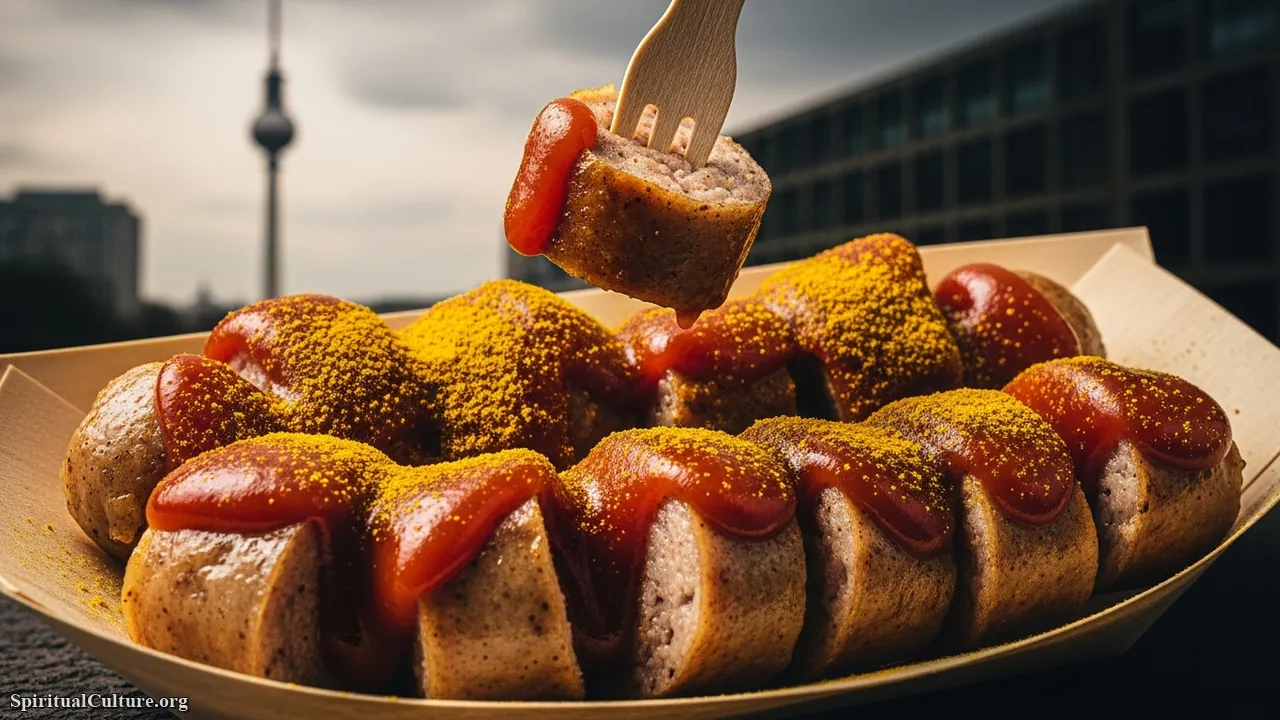
This dish ranks here because it symbolizes the “Spirit of Berlin”—grit, survival, and the ability to create something vibrant from the ashes of destruction. It represents the democratization of dining; it is a street food eaten standing up (at a Imbissbude), where bankers and construction workers stand shoulder to shoulder. It is a culinary testament to the leveling of class structures in the modern era.
The moral lesson of Currywurst is one of adaptation. It reminds us that culture is not static; it evolves to meet the needs of the people. Preserving the Currywurst tradition is about honoring the post-war generation’s determination to find joy and flavor even in the bleakest of times.
Cultural Highlights
- Symbol of Resilience: Invented in 1949 amidst the ruins of Berlin.
- Egalitarian Dining: A street food that removes social barriers; everyone eats it standing up.
- Cultural Fusion: Represents the first waves of international influence (British spices) on German staples.
Top 8. Sauerkraut
Sauerkraut is perhaps the most internationally recognized German food, but its depth is often overlooked. Historically, this fermented cabbage was not just a side dish; it was a survival mechanism. Before refrigeration, the fermentation process (lacto-fermentation) preserved the harvest through the long, harsh Central European winters, providing essential Vitamin C that prevented scurvy. In this sense, Sauerkraut is a life-giving food.

From a Spiritual Culture perspective, Sauerkraut represents “Time as an Ingredient.” It cannot be rushed; it requires patience and faith in the natural processes of nature. It serves as a reminder of the agrarian cycles that once dictated human life, connecting the modern diner to the earth’s rhythms. The sour flavor profile is a testament to the German palate’s appreciation for complexity and balance.
Today, the preservation of traditional Sauerkraut making is a rebellion against industrial, sterile food production. It honors the wisdom of ancestors who understood the alchemy of salt and time. Eating it is an act of acknowledging the hardship of the past and the ingenuity that ensured survival.
Cultural Highlights
- Survival Heritage: Essential for preventing scurvy during winter due to high Vitamin C content.
- The Art of Fermentation: Represents the transformation of simple ingredients through time and nature.
- Regional Staple: Integral to dishes like Schlachteplatte and varied across regions (wine vs. plain).
Top 7. Rinderrouladen (Beef Rolls)
Rinderrouladen is the embodiment of “Hausmannskost”—traditional home cooking that warms the soul. Consisting of thin beef rolled around bacon, onions, mustard, and pickles, then braised slowly, this dish is a labor of love. It is rarely found as a “fast food”; it requires preparation, attention, and time, making it a dish that communicates care and affection from the cook to the recipient.
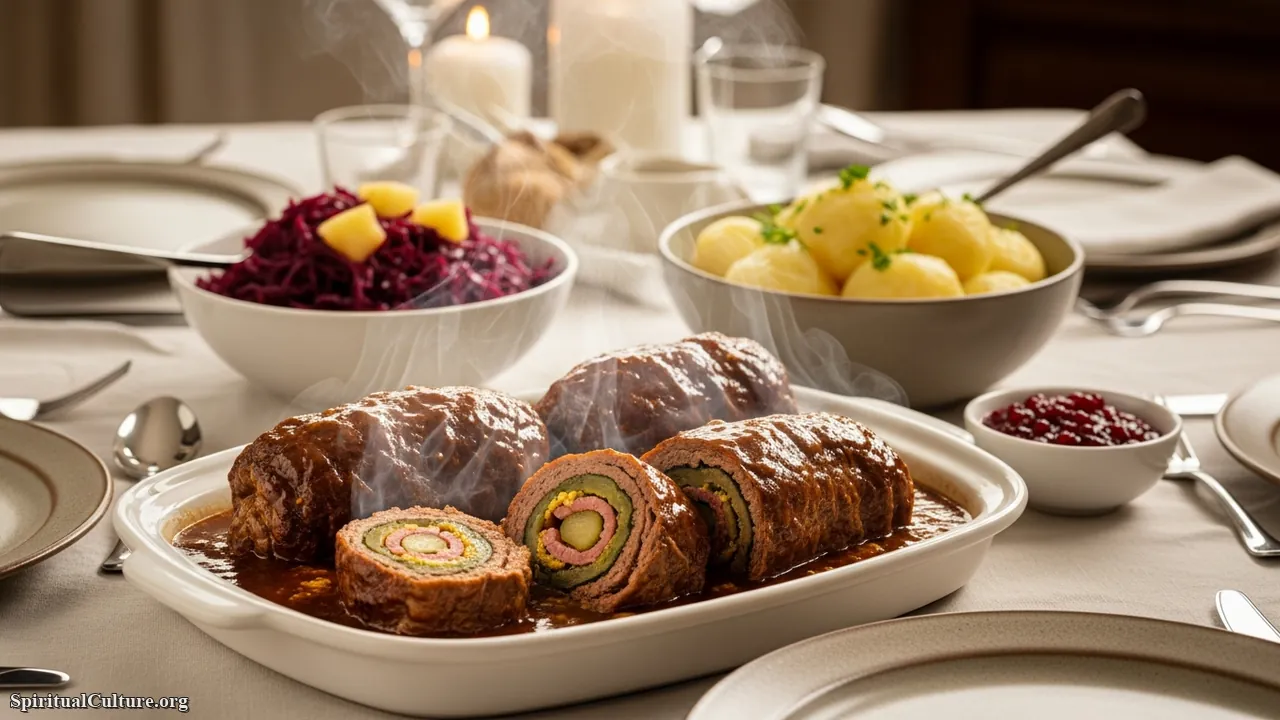
The spiritual impact of Rouladen lies in its role as a bonding agent for the family unit. The aroma of braising meat and gravy filling a home on a Sunday creates a sensory memory of safety and belonging. It is a dish that says, “You are home, and you are cared for.” The hidden treasures inside the roll—the pickle and bacon—are like culinary surprises that delight the inner child.
In a fast-paced world, the preservation of Rouladen recipes is crucial. It champions the philosophy of “Slow Food” long before the movement existed. It teaches us that good things take time and that the effort put into nourishing others is a sacred domestic duty.
Cultural Highlights
- Domestic Devotion: A labor-intensive dish that signifies love and care for the family.
- Flavor Complexity: Combines sour (pickle), spicy (mustard), salty (bacon), and savory (beef).
- Historical Consistency: A recipe that has remained largely unchanged for centuries.
Top 6. Spätzle
Spätzle, the irregular egg noodle from the Swabian region, is the ultimate comfort food of Southern Germany. Its name, meaning “little sparrows,” evokes a sense of playfulness and nature. Historically, Spätzle was a peasant dish, made from simple, affordable ingredients—flour and eggs—yet it provided the sustenance needed for hard labor in the fields. It is the foundational carbohydrate of the South.
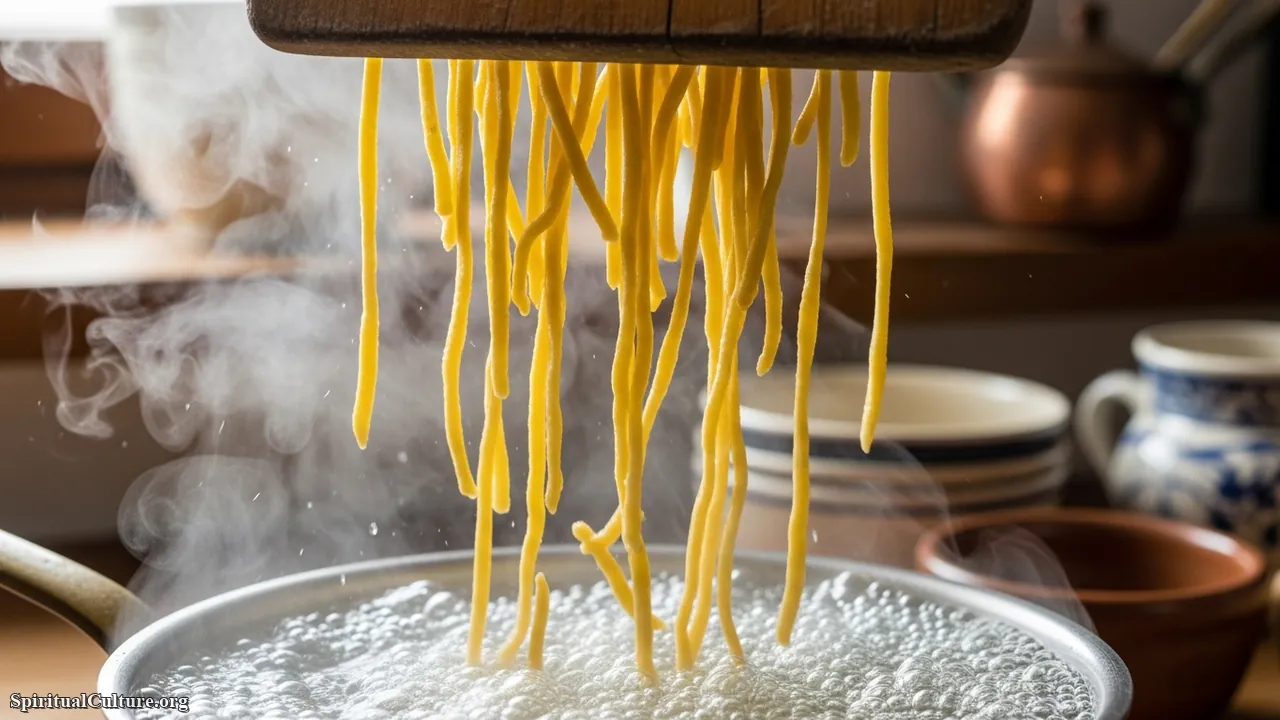
We analyze Spätzle as a symbol of “Unpretentious Excellence.” Unlike Italian pasta which often strives for uniform shapes, Spätzle is scraped by hand, resulting in unique, rustic forms. This reflects the Swabian cultural value of substance over style—it doesn’t need to look perfect to taste divine. It is often served with cheese (Kässpätzle) or lentils, grounding the eater with heavy, earthy flavors.
The tradition of hand-scraping Spätzle (vom Brett schaben) is a dying art that many grandmothers still practice. Preserving this technique is vital for maintaining the connection to the region’s artisan roots. It reminds us that the most satisfying things in life are often the simplest and most handmade.
Cultural Highlights
- Swabian Identity: The defining dish of Baden-Württemberg cuisine.
- Handmade Heritage: Traditional preparation involves scraping dough by hand into boiling water.
- Comfort & Sustenance: Originally a “poor man’s food” that became a beloved regional treasure.
Top 5. Kartoffelsalat (Potato Salad)
The potato transformed Europe, preventing famines and fueling the industrial revolution, but nowhere is it revered quite like in Germany’s Kartoffelsalat. This dish reveals a profound cultural divide: the “Potato Equator.” The North generally uses mayonnaise, while the South uses a broth, vinegar, and oil base. This dichotomy illustrates the immense regional diversity within a single national identity.

At Spiritual Culture, we see Kartoffelsalat as the humble anchor of the feast. It is present at Christmas (often served with sausages on Christmas Eve to keep the meal simple before the holy day), at barbecues, and at funerals. It accompanies the Germans through the cycle of life. Its ubiquity makes it a shared language; everyone has a preference, and everyone has a family recipe that they swear is the “only correct one.”
The value of this dish lies in its ability to maintain regional pride while fostering national unity. It teaches us that there are multiple ways to reach a delicious outcome. Preserving the specific regional variations of potato salad is akin to preserving local dialects—it is a matter of identity.
Cultural Highlights
- The Potato Equator: Illustrates the North (Mayo) vs. South (Vinegar/Broth) cultural divide.
- Christmas Eve Tradition: Traditionally eaten on Dec 24th as a simple meal before the opulence of Christmas Day.
- Staple Food: Highlights the historical importance of the potato in ending European hunger.
Top 4. Lebkuchen (Gingerbread)
Lebkuchen is far more than a cookie; it is a sacred artifact of the holiday season, deeply entrenched in the history of the spice trade and religious orders. Originating in the monasteries of Franconia (most notably Nuremberg) around the 13th century, these treats were created by monks using exotic spices from the Orient, honey (a symbol of purity), and nuts. They were considered “healing cakes” due to the medicinal properties of the spices.
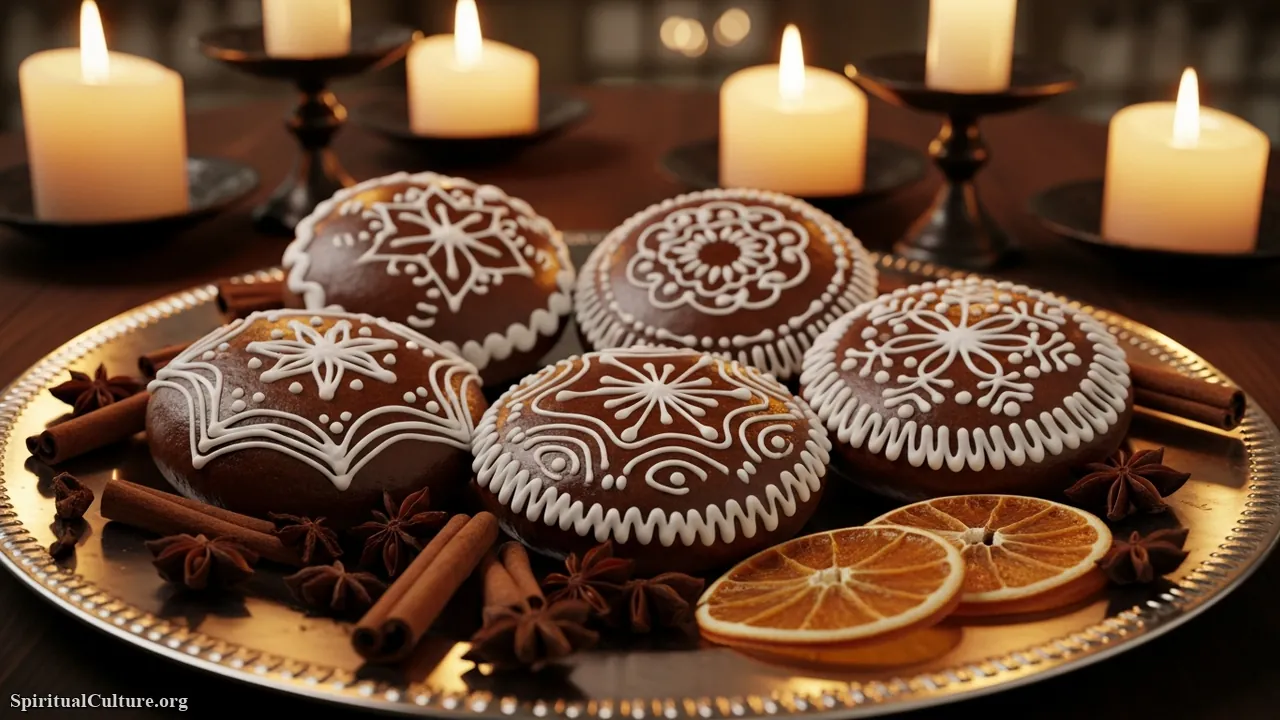
The spiritual resonance of Lebkuchen is undeniable. It is the “Frankincense of the Kitchen.” The aroma of cinnamon, cloves, anise, and cardamom triggers a collective memory of Christmas, Advent, and spiritual anticipation. The city of Nuremberg protected the quality of these cakes with guilds, establishing early forms of food purity laws that reflected the high value placed on this trade.
To eat a genuine Elisenlebkuchen is to partake in a centuries-old ritual of winter celebration. It reminds us of the interconnectedness of the world (through the spice trade) and the role of the church in culinary history. Preserving this tradition is about keeping the magic and mystery of the Christmas season alive.
Cultural Highlights
- Monastic Origins: Invented by monks in the Middle Ages as a dense, energy-rich food.
- Protected Heritage: Nürnberger Lebkuchen is a protected designation of origin (PDO).
- Spiritual Spice: Uses spices historically associated with healing and the Holy Land.
Top 3. Bratwurst
The Bratwurst is the stalwart of German cuisine, with documented evidence dating back to 1313 in Nuremberg. However, it is not just a sausage; it is a totem of local pride. With over 40 regional varieties, the Bratwurst represents the fierce independence and distinct culture of German city-states. Whether it’s the small Nürnberger, the long Thüringer, or the coarse Fränkische, the sausage declares, “This is where I am from.”
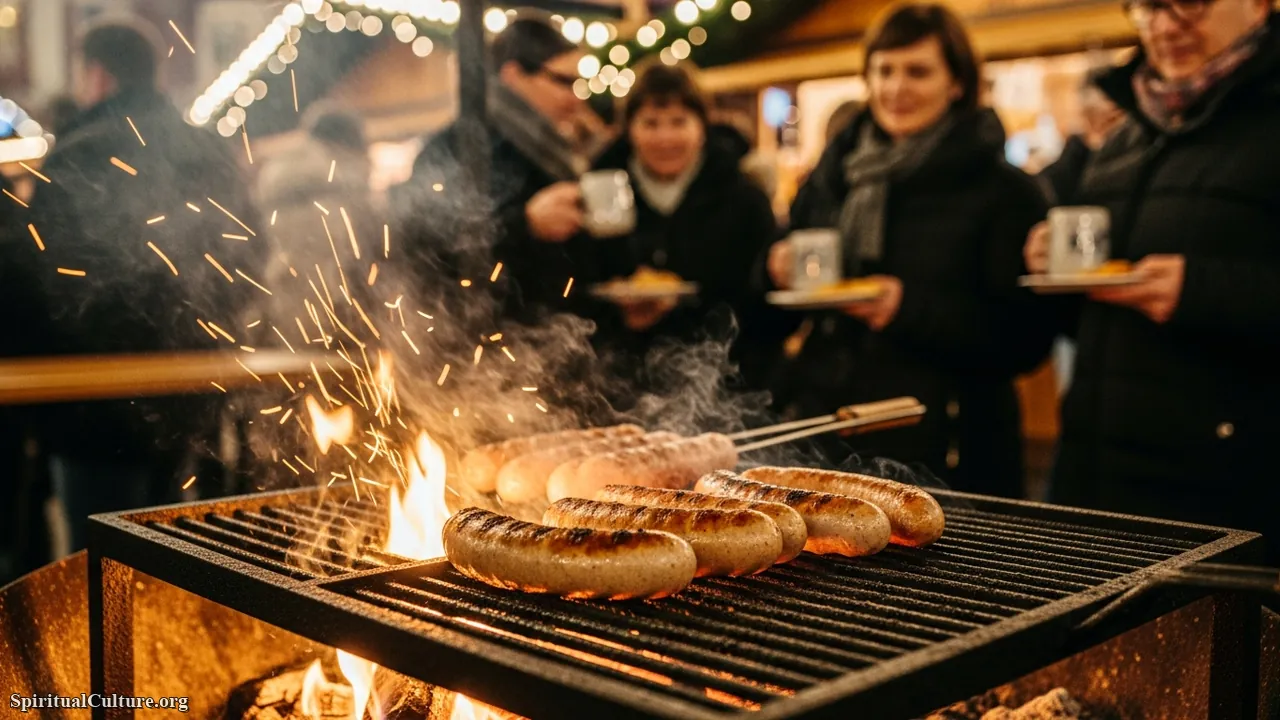
Spiritual Culture views the grilling of Bratwurst as a primal, communal act. It is the centerpiece of the Volksfest (people’s festival) and the Christmas market. The smoke rising from the grill serves as a beacon, gathering people together. It transcends social class—it is the great democratizer, enjoyed by chancellors and students alike.
The preservation of traditional butchery and spice blends required for authentic Bratwurst is a fight against industrial homogenization. It teaches the lesson of “Unity in Diversity”—one concept (the sausage) expressed in dozens of unique, valid ways. It is a celebration of the local within the national.
Cultural Highlights
- Ancient History: The bratwurst tradition in Nuremberg is documented as far back as the 14th century.
- Regional Pride: Over 40 distinct regional varieties exist, each protected and cherished.
- Social Glue: The central food item of festivals, markets, and community gatherings.
Top 2. Sauerbraten
If there is a national dish of Germany, it is likely Sauerbraten. This pot roast, usually made of beef (historically horse in some regions), is marinated for days in a mixture of vinegar, wine, and spices before being slow-cooked. This method was born of necessity—to tenderize tough cuts of meat and preserve them without refrigeration. It is the ultimate example of German ingenuity turning a challenge into a delicacy.
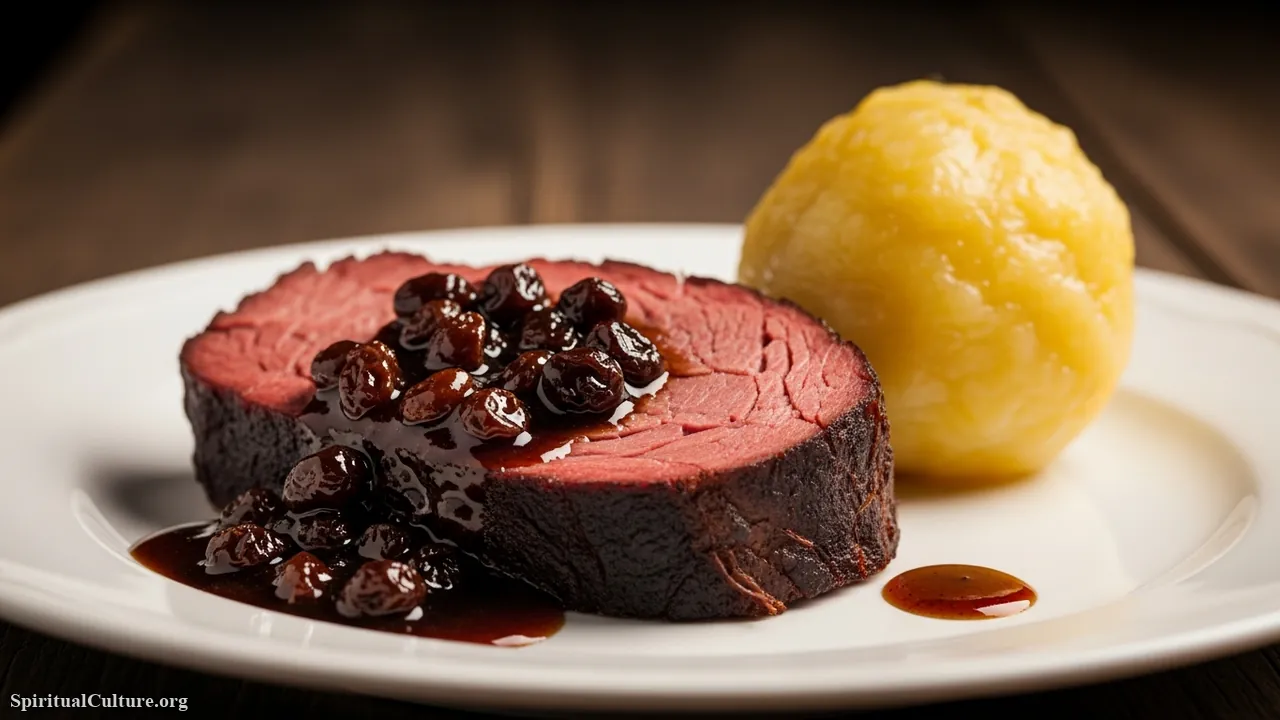
The spiritual weight of Sauerbraten is found in its demand for patience. In an age of instant gratification, Sauerbraten refuses to be rushed. It requires planning days in advance, making it a dish of intention. It is typically the centerpiece of a festive family gathering, symbolizing the heavy, sweet-sour complexity of life itself.
The dark, rich gravy, often thickened with crumbled gingerbread (Soßenkuchen), bridges the savory and the sweet, a hallmark of old German cuisine. Preserving Sauerbraten is about preserving the Sunday dinner culture—the designated time to sit, slow down, and nourish both the body and the family bond.
Cultural Highlights
- Culinary Patience: Requires 3 to 10 days of marinating, symbolizing foresight and planning.
- Historical Utility: The vinegar marinade was originally a method of preservation for meat.
- Flavor Profile: Famous for the balance of sweet and sour (süß-sauer), often using raisins and gingerbread.
Top 1. Brezel (Pretzel)
At the pinnacle of our list is the Brezel, specifically the large, soft Laugenbrezel. This is not merely a snack; it is a spiritual icon baked into dough. Its origins are deeply intertwined with the Christian faith of early medieval Europe. The shape is widely believed to represent the crossed arms of a monk in prayer (or a child in prayer), with the three holes representing the Holy Trinity. Historically, because they contain no eggs or dairy, they were the ideal food for Lent.

At Spiritual Culture, we rank the Brezel number one because it perfectly synthesizes the sacred and the secular. It is a holy symbol that has become the daily bread of the people. It represents the cycle of daily life in Southern Germany—appearing at the mid-morning snack (Brotzeit), in the beer gardens, and at festivals. The lye bath (Lauge) that gives it the brown skin and distinct flavor is a unique chemical process that defines German baking.
The Brezel is a cultural ambassador. To break a fresh Brezel, with its thick, soft belly and crispy arms, is to participate in a tradition that has fed pilgrims, monks, and kings for over a thousand years. Its preservation is a matter of national identity, reminding us that even our simplest foods are born of prayer and history.
Cultural Highlights
- Spiritual Symbolism: Represents arms crossed in prayer; the three holes symbolize the Trinity.
- Lenten Tradition: Historically consumed during Lent due to the lack of dairy and eggs.
- Guild Symbol: The emblem of German bakers for centuries, signifying the dignity of the trade.
- Daily Ritual: The essential component of the Bavarian Brotzeit and beer garden culture.
Conclusion
German cuisine is a testament to the concept of Gemütlichkeit—a feeling of warmth, friendliness, and good cheer. But as we have explored, these top 10 foods offer more than just comfort; they offer a connection to a deep, resilient history. From the prayerful shape of the Brezel to the post-war grit of the Currywurst, each dish serves as a chapter in the story of a people who value substance, patience, and community.
At Spiritual Culture, we believe that understanding the heritage of what we eat elevates the act of dining into a spiritual experience. When you partake in these foods, you are not just consuming calories; you are honoring the monks, the farmers, the mothers, and the innovators who built a culture that endures through its flavors. We hope this guide inspires you to approach your next German meal with a renewed sense of reverence and appetite.




